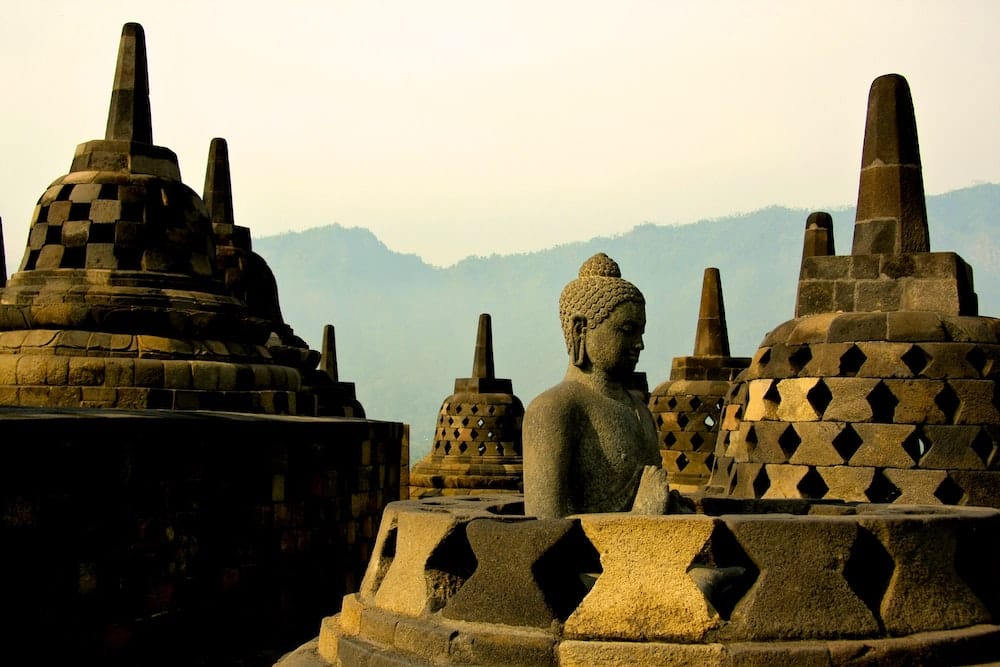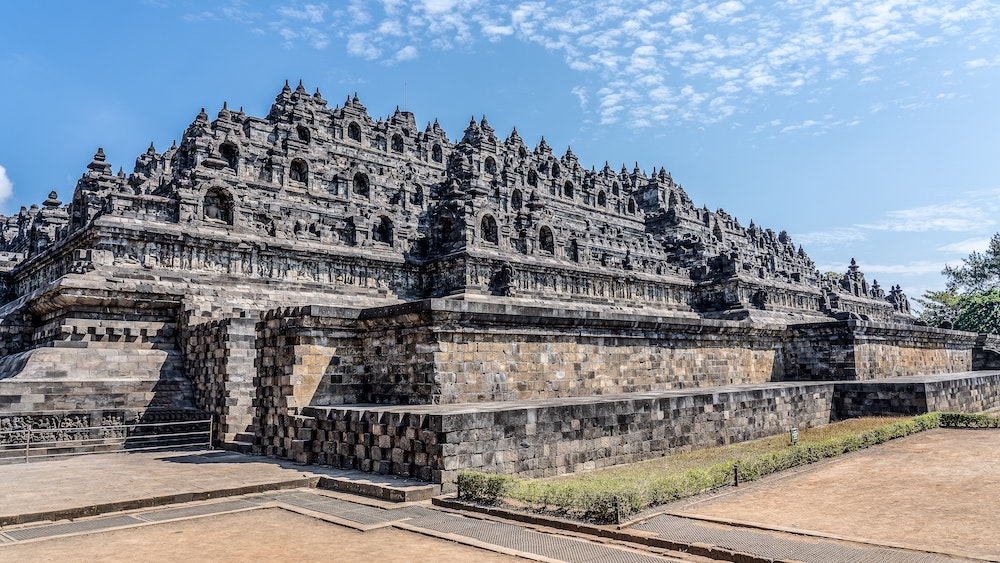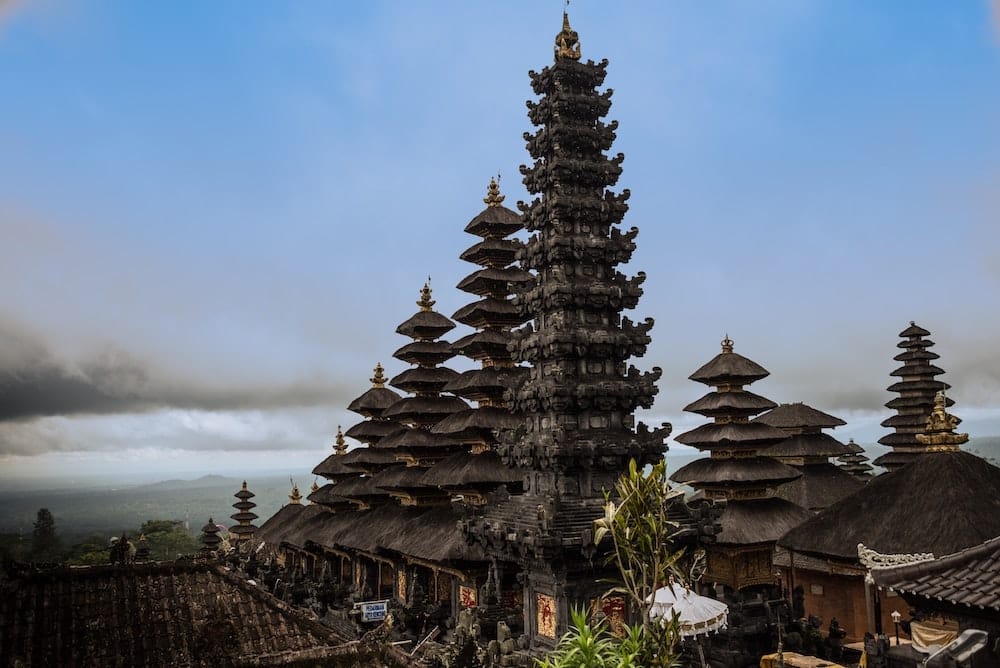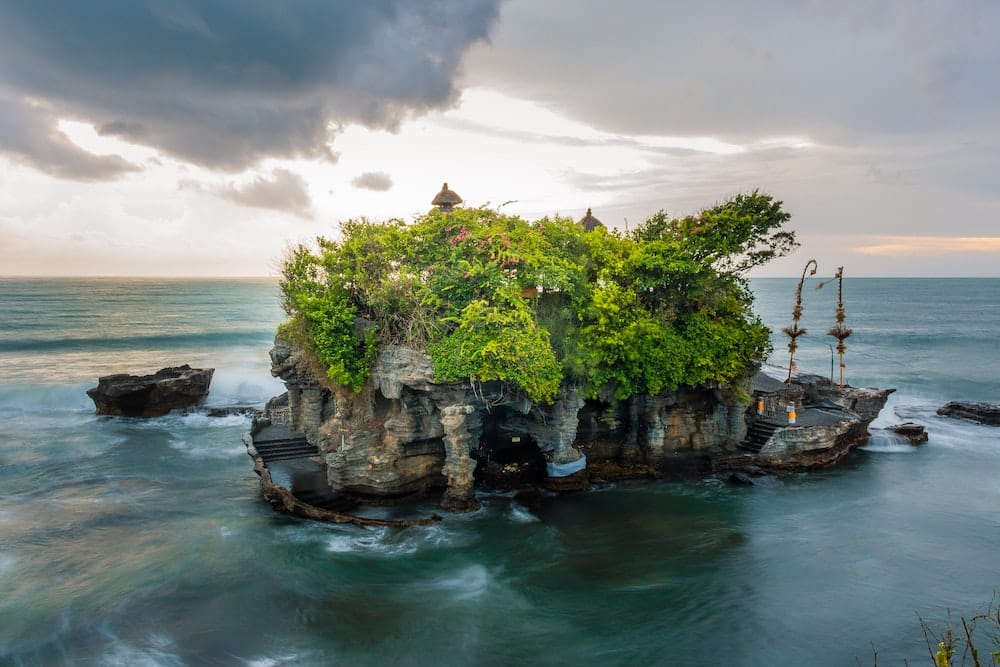Must-Visit Temples in Indonesia

By Anya Cooklin-Lofting
Built between the 4th and 15th centuries, there are over 10,000 ‘candi’ or temples, in Indonesia. The ancient andesite stone structures, sculptures and pagodas are ethereal, imposing and majestic, representing the various ethnic groups that have called this lush archipelago home throughout its long cultural history. Most notable are the Buddhist and Hindu temples that appear to have been born from ancient roots knotted deeply in the very landscapes they have come to define. The intricate carvings, relentless arteries of steps and figurative expressions of gods, animals and symbols tell stories, evoke inherited customs and have compelled many authors, poets and artists.
Today, such treasures of Indonesia’s rich cultural and religious heritage are some of its prime tourist attractions. Across over 17,000 islands that comprise the country, visitors can find these architectural gems curled into islets or piercing the hazy sunsets with spires of tiered stone. Each temple is a relic of an age built on unknowable devotion and fantastical determination, and I can think of no sites more exciting to visit on your next, or perhaps your first, Indonesian getaway. This month, we’re rounding up some of the most impressive temples in Indonesia, from their architectural ingenuity to their sheer awe-inspiring presence.
Borobudur Temple

Widely considered one of the world’s seven wonders, the lotus-shaped Borobudur temple is located on the island of Java and was built around the 8th century. It is the largest Buddhist temple in the world, containing an impressive 72 statues of Buddha that can be found amongst its five concentric square terraces and three tiers. In fact, each of these tiers represents distinct ‘spheres’ of the universe, as understood in Buddhist cosmology, kamadhatu, rupadhatu, and arupadhatu. According to Unesco, the universal spheres, “[represent] respectively the sphere of desires where we are bound to our desires, the sphere of forms where we abandon our desires but are still bound to name and form, and the sphere of formlessness where there is no longer either name or form,” to the end of attaining Nirvana, a significant concept in Buddhism.
On the world stage, Borobudur Temple has become an icon of resilience in the face of earthquakes, bombings and event the volcanic eruption of Mount Merapi in 2010 when it was covered in acidic volcanic ash that experts warned might damage the site. A swift clean-up job helped to preserve the temple, though, and the site was reopened to tourists again after just 5 days.
Pura Besakih

The Besakih Temple is the single most important temple in Balinese Hinduism. The sprawling temple is the largest of its kind, sitting almost a kilometre up the side of Mount Agung in Bali and comprising 23 separate temples across beautifully planted terraces. Although the temple itself has roots in the 13th century and later in the Gelgel dynasty of the 15th century, experts believe that the site’s religious importance dates from prehistoric times.
Of course, Bali is one of Indonesia’s most popular tourist destinations and the island is famed for its beautiful hotels, water sports and its nightlife, making Pura Besakih a must-see for cultural travellers. It is likely that there will be some sort of celebration at the time of your visit, too; there are at least 70 festivals annually that take place at the Besakih, each connected to a specific shrine on the site.
Tanah Lot Temple

This Balinese temple is one of the most visually arresting ancient architectural feats in Indonesia. Directly translated as ‘land in the sea’ Tanah Lot is situated on its own beautiful island, accessible only on foot during low tide. The Hindu temple is heavy with the weight of historical myths and legends, including the presence of venomous sea snakes that are believed to guard the temple from intruders and sinister evil spirits. The land on which the temple sits has been shaped by the sea over the centuries and in the 1980s, the Japanese and Indonesian governments worked together to help conserve the site with artificial rocks.





